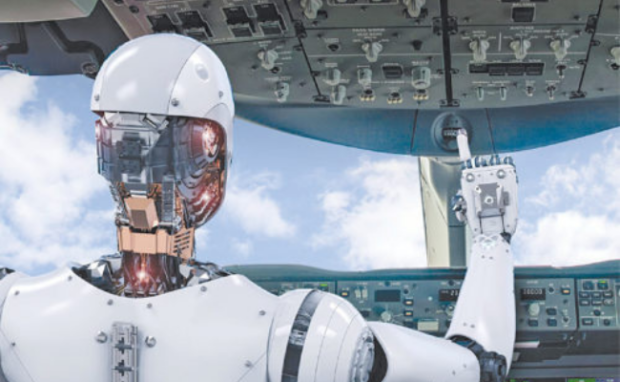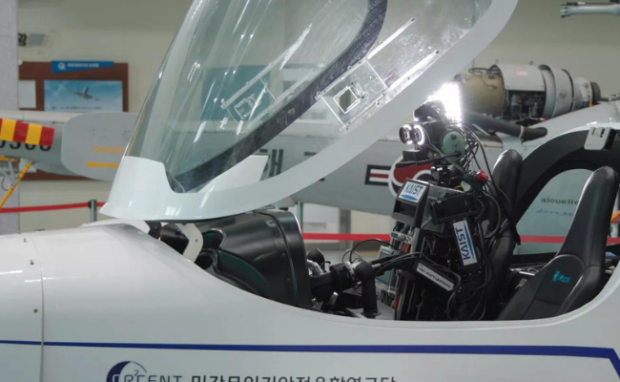AI copilot helps human pilots make flying safer
A human pilot and his AI copilot could make your next flight possible. The MIT Computer Science and Artificial Intelligence Laboratory (CSAIL) created an artificial intelligence system called Air-Guardian that helps pilots handle information from multiple indicators, especially during emergencies. As a result, this machine could make aviation safer.
This project follows our ideal use of artificial intelligence by turning it into a tool instead of replacing human workers. Moreover, it could improve air transportation worldwide by guiding pilots during their flights. Maybe it could become part of other forms of transportation like ships, cars, trucks, and maybe even drones.
This article will discuss how this artificial intelligence program functions. Later, I will cover a similar tech project related to AI and transportation.
How does the AI copilot work?

Photo Credit: electronicsforu.com
The MIT News website says pilots contend with numerous cockpit indicators and screens. As a result, human pilots are likely to get distracted. The AI copilot aims to take over the controls whenever they lose attention.
It will return control once the human pilot and the machine copilot pay attention to the same screens. Hence, the “Air-Guardian acts as a proactive copilot; a partnership between human and machine, rooted in understanding attention.”
The AI copilot uses eye-tracking to confirm the human pilot maintains focus. It uses a neural system that relies on “saliency maps,” which pinpoints where a person directs his attention. The maps are visual guides that highlight key areas within an image.
Also, they help in understanding the behavior of complex algorithms. These systems enable Air-Guardian to detect potential risks via attention markers. In contrast, traditional autopilot systems only help during safety breaches.
MIT News says other modes of transportation could use this AI copilot. As mentioned earlier, cars, drones, and other vehicles could use this technology. “An exciting feature of our method is its differentiability,” said Lianhao Yin, a lead author on a new paper about Air-Guardian.
You may also like: Microsoft adds AI features to Bing and Edge
“Our cooperative layer and the entire end-to-end process can be trained. We specifically chose the causal continuous-depth neural network model because of its dynamic features in mapping attention.”
“Another unique aspect is adaptability. The Air-Guardian system isn’t rigid; it can be adjusted based on the situation’s demands, ensuring a balanced partnership between human and machine.”
The AI system allegedly made flights safer and guided them in navigating to target waypoints during field tests. “This system represents the innovative approach of human-centric AI-enabled aviation,” stated Ramin Hasani, MIT CSAIL research affiliate.
What are other AI transportation projects?

Photo Credit: euronews.com
MIT created an AI copilot, but the Korea Advanced Institute of Science & Technology took that concept to the next level months before its announcement. In August 2023, KAIST unveiled its AI pilot, Pibot (pilot robot).
Professor David Hyunchul Shim explained, “Pibot is a humanoid robot that can fly an airplane just like a human pilot by manipulating all the single controls in the cockpit, which is designed for humans.” Its humanoid form enables it to sit in the pilot’s seat.
The limbs allow it to operate flight controls meant for human hands and arms. “The human form may not be super efficient, but we specifically designed Pibot to be a humanoid form because all the things are built for humans,” Professor Shim elaborated.
“We can have eight arms and four eyes, but we find the human form is somehow optimal,” he added. Pibot has external cameras that monitor the aircraft’s status, and its internal ones help it manage control panel switches.
You may also like: MIT develops faster robot training method
Believe it or not, this AI robot uses ChatGPT, the famous AI chatbot from OpenAI. Shim said the machine uses the AI program to “understand” and memorize flight manuals.
“We had our predecessor of a pilot robot in 2016. At the time, we didn’t have good AI technology, so what we built was a simple robot. They cannot really learn anything from the literature or the manual. But recently, with ChatGPT or with other large language model systems, the technology made paramount progress,” Shim stated.
It can memorize emergency manuals and calculate a safe route based on its aircraft status. Moreover, it can communicate with air traffic controllers and humans in the cockpit with voice synthesis.
Conclusion
MIT created an AI copilot that will assist human pilots in making flights safer. It ensures humans are paying attention to important information via eye-tracking.
If the human is focusing elsewhere, it will take over the controls. As a result, it maintains safety before an emergency occurs. Of course, the human pilot still leads the flight.
Gain additional information about this AI copilot by reading its arXiv paper. Also, uncover the growing power of artificial intelligence at Inquirer Tech.